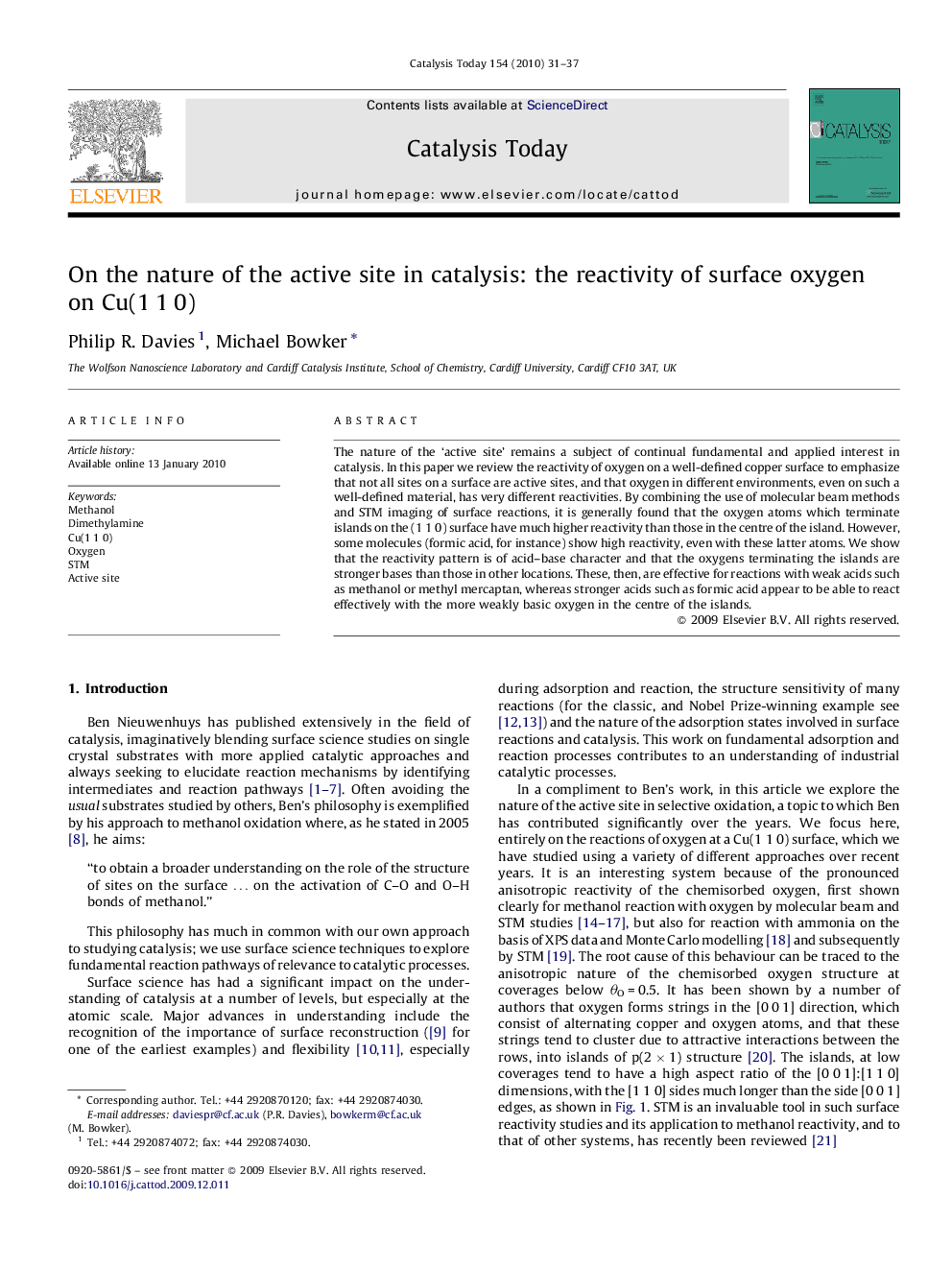| Article ID | Journal | Published Year | Pages | File Type |
|---|---|---|---|---|
| 56670 | Catalysis Today | 2010 | 7 Pages |
The nature of the ‘active site’ remains a subject of continual fundamental and applied interest in catalysis. In this paper we review the reactivity of oxygen on a well-defined copper surface to emphasize that not all sites on a surface are active sites, and that oxygen in different environments, even on such a well-defined material, has very different reactivities. By combining the use of molecular beam methods and STM imaging of surface reactions, it is generally found that the oxygen atoms which terminate islands on the (1 1 0) surface have much higher reactivity than those in the centre of the island. However, some molecules (formic acid, for instance) show high reactivity, even with these latter atoms. We show that the reactivity pattern is of acid–base character and that the oxygens terminating the islands are stronger bases than those in other locations. These, then, are effective for reactions with weak acids such as methanol or methyl mercaptan, whereas stronger acids such as formic acid appear to be able to react effectively with the more weakly basic oxygen in the centre of the islands.
